Corsair Hydro Series H150i Pro RGB and H115i Pro RGB Reviews
March 19, 2018 | 18:00
Companies: #corsair
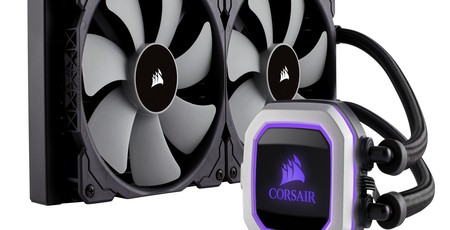
Performance Analysis
It’s early days in our cooler testing with these new systems, so comparison figures are thin on the ground. Nevertheless, with two coolers, three compatible systems, and three settings per setup, we’ve a lot of results to sift through and consequently a good idea of how the H115i Pro RGB and H150i Pro RGB perform.
Starting with peak performance (fans and pump locked at full speed), we see no difference between the two on the mainstream LGA 1151 system, and with a delta T of 43°C, they are only 3°C cooler than the Cooler Master Seidon 120V V3 Plus, a basic and inexpensive 120mm-based AIO cooler. However, both are considerably quieter too; the Seidon model makes quite a whine to at its own peak speed compared to a modest thrum from Corsair, although the H115i is the quieter of the two. On LGA 2066, the larger H150i flexes its muscles and is 4°C coolers than the H115i, which is itself 6°C better than the basic AIO. For AM4, we only have a basic air cooler to compare to, as many of the older coolers we have in came before AM4. Unsurprisingly, both Corsair coolers run much cooler.
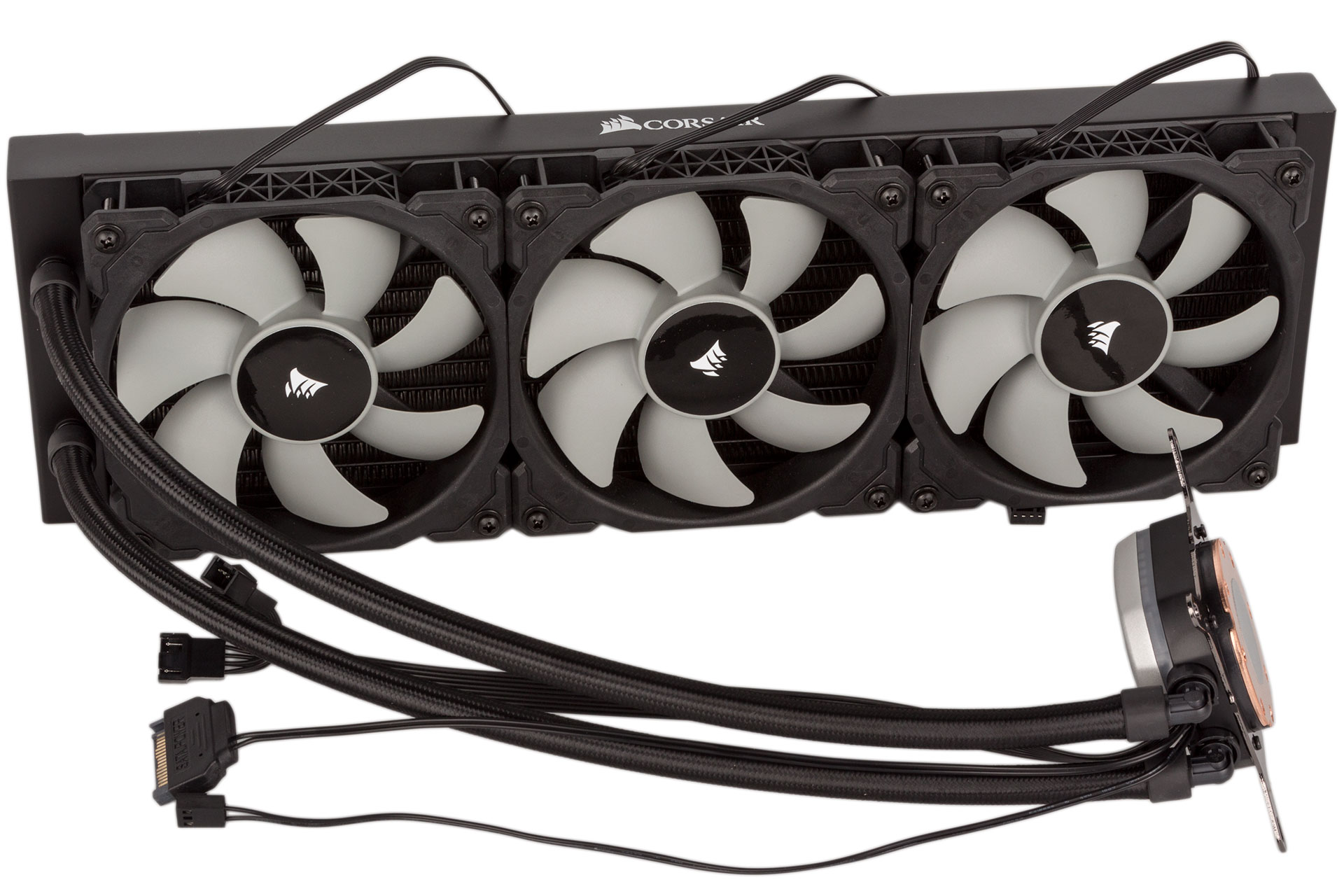
Switching to the Balanced profile on the pump and fans, temperatures warm up by similar amounts on both coolers: between 2°C and 5°C. The performance remains the same on LGA 1151, this time matching the full-speed Cooler Master Seidon model, but now the noise output favours Corsair even more. On AM4, the temperature increases more than on any other socket, but fan speeds are nicely subdued, especially on the H115i where the larger 140mm fans were hovering at only 850 RPM. On LGA 2066, the heat output was high enough to force the fans to simply run at full speed eventually, so the 2°C warmer result on both coolers is accounted for by the fans ramping up and by the slower pump.
The Quiet profile puts the pump at a rather low speed and caps the maximum fan speed, and the impact with our overclocked CPUs is obvious. The LGA 1151 CPU is still adequately cooled, though, and the fans spin very slowly: around 600 RPM on the 120mm fans and just 550 RPM on the 140mm ones. These values increase a little on AM4, but the temperatures are affected more drastically: Both coolers are now 11°C warmer than the Balanced profile, most likely as a result of the slow pump. Meanwhile, on LGA 2066, the results are a bit misleading. Both coolers saw the CPU very nearly hit its maximum temperature of 105°C, which would have qualified as a fail. However, the coolers seemed to be aware of this, and ramped up the pump speed to the Balanced profile without us interfering, which immediately dropped temperatures to 3°C or 5°C warmer than the 120mm AIO operating at full speed – not bad considering the fans were again exceptionally quiet. As such, we do not recommend using the Quiet pump setting for any overclocked CPU, especially as the noise difference is minimal anyway.
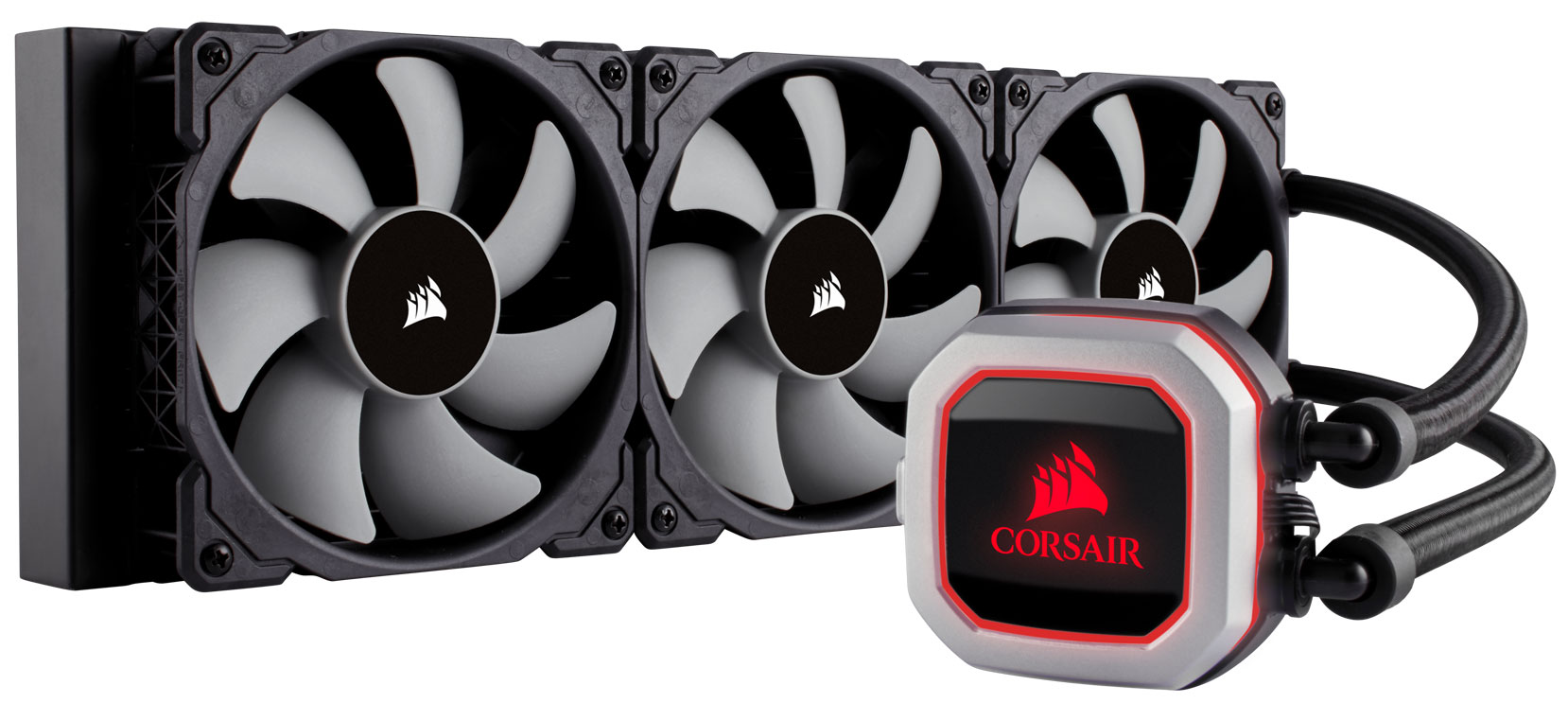
Conclusion
This is a strong pair of coolers from Corsair that demonstrates how the company (and Asetek, of course) has been able to continually refine the design of the older Hydro Series coolers. Build quality is great, the installation could hardly be easier, and the software works well for giving users good control over the lighting and performance. On the topic of performance, the H150i Pro RGB and H115i Pro RGB are both excellent. Our favourite is probably the latter thanks to it having almost identical performance but with one less fan and slower-spinning fans, giving it the edge on noise, not to mention it being cheaper too. It's appropriate that we've just built a new set of cooler test systems, as now we have the new benchmark against which to measure all other coolers.


MSI MPG Velox 100R Chassis Review
October 14 2021 | 15:04

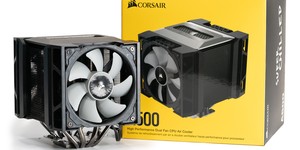

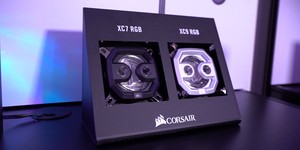




Want to comment? Please log in.